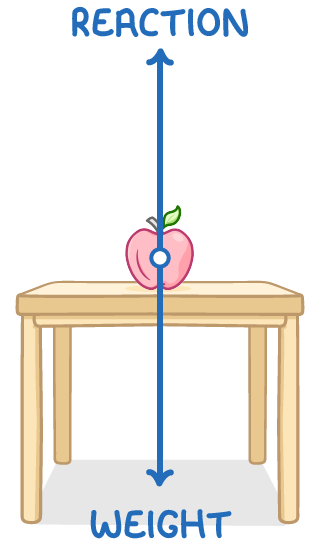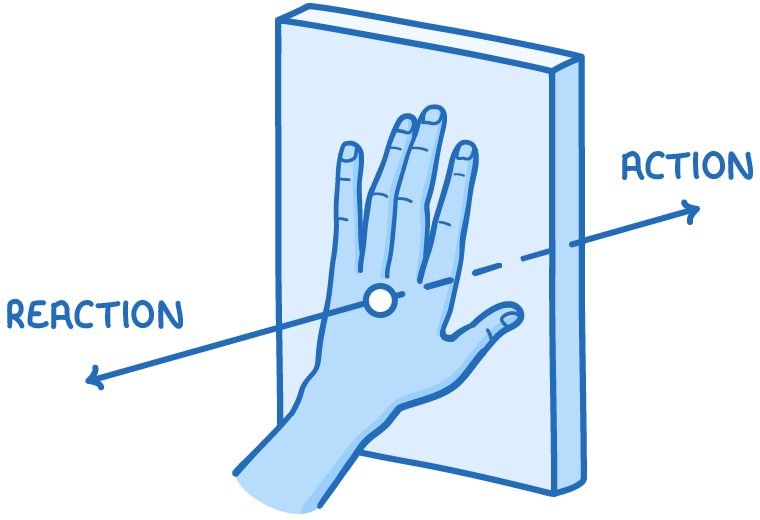Newton's Laws Of Motion
This lesson covers:
- Understanding Newton's first law
- Quantifying force, mass, and acceleration using Newton's second law of motion
- Exploring Newton's third law of motion and the principle of action and reaction forces
Newton's first law

An object will remain at rest or in uniform motion in a straight line unless acted upon by an external force.
Key points:
- A stationary object will stay still until a resultant force acts upon it.
- An object in motion continues to move at a constant speed and direction unless a resultant force changes its speed or direction.
Newton's second law
Newton’s second law states that the rate of change of momentum is directly proportional to the net force experienced.
F = tΔP
Where:
- F = net force in newtons (N)
- ΔP = change in momentum (kg m s−1)
- t = time in seconds
Newton’s second law can also be expressed as:
F=ma
Where:
- F = resultant force in newtons (N)
- m = mass of the object in kilograms (kg)
- a = acceleration in meters per second squared (m s-2)
Worked example: Calculating the force acting on an accelerating object
A car of mass 1,000 kg accelerates at 2 m s-2. Find the net force.
Step 1: Formula
F = m x a
Step 2: substitution and correct evaluation
F = 1,000 x 2 = 2,000 N
Newton's third law
Newton’s third law states that for every action, there is an equal and opposite reaction.

Interaction of Forces:
When one object exerts a force on a second object, the second object exerts an equal and opposite force on the first.
- The forces are always of the same type (e.g., both gravitational )
- The paired forces act on different objects.